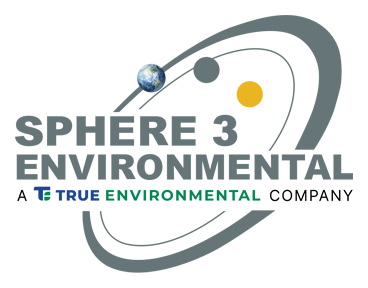At Sphere 3 Environmental, we assist clients from all industries in meeting their air quality and permitting needs. Our services are customized for each client and range from permitting one facility to creating a multi-facility/multi-state air quality compliance program.
Emissions Evaluation
Owners and operators of industrial facilities are required to comply with federal and state air pollutant regulations. Typical tasks include dispersion modelling, emissions inventory, and evaluation of allowable emission limits. Regulatory agencies require approved software programs to perform these calculations. Our staff is well-trained in utilizing modern assessment tools and techniques to calculate regulated pollutant emissions and determine applicability of federal and state requirements.
Air Quality Permitting
The Clean Air Act is a federal law designed to improve, strengthen, and accelerate programs for the prevention of air pollution. The U.S. Environmental Protection Agency (EPA) administers the Clean Air Act, in coordination with state, local, and tribal governments. As a result, owners and operators are required to comply with a wide variety of environmental permits pertaining to air quality.
Two permitting programs have been developed from the Clean Air Act: The New Source Review (NSR) program and the Federal (Title V) Operating Permits program. The NSR program was developed to preserve the quality of air and requires a permit to be obtained prior to construction of a facility. A Title V permit is required for owners and operators of major sources and certain non-major sources. In general, Title V permits prescribe monitoring and recording keeping, ensuring better compliance with federal standards.
Air permit registrations include detailed site assessments, emissions calculations, dispersion modeling, and regulatory applicability determinations. Whether constructing new sources or modifying existing facilities, our staff can assist with all aspects of the permitting process. Our highly experienced team works closely with the regulatory agencies to provide our clients with the most flexible permit and seamless agency review.
LDAR/Optical Gas Imaging/Quad Oa
Sphere 3 provides Optical Gas Imaging (OGI) for oil and gas production sites, plants, and midstream facilities using in-house FLIR 320 Gas Find infrared cameras. We provide Leak Detection and Repair (LDAR) plans, compliance reports, and coordinate with corporate and field staff to ensure that documented leaks are repaired within regulatory timeframes. Our staff can also conduct a variety of repair confirmation surveys as well. We also utilize the information gathered during the surveys to generate necessary portions of annual Quad Oa and Greenhouse Gas reports. Our ability to provide all aspects of the regulatory guidance, surveys, coordination, and agency reporting sets us apart from other companies that only provide a piece of the puzzle.
Greenhouse Gas Emissions/Sustainability(ESG)
On October 30, 2009, the EPA published a new regulation (40 CFR Part 98) for the mandatory reporting of greenhouse gases from sources that emit 25,000 metric tons or more of carbon dioxide equivalent per year. The rule applies to 41 industrial categories who are direct greenhouse gas emitters, fossil fuel suppliers, industrial gas suppliers, and facilities that inject CO2 underground. Reports are submitted using an electronic greenhouse gas reporting tool (e-GGRT) and are due on March 31 for emissions in the previous calendar year.
Data collection for the annual greenhouse gas report requires detailed recordkeeping and emissions evaluation. To assist reporters in complying with this regulation, our Air Quality team can provide data collection management, perform emissions calculations compliant with federal standards, and prepare the annual greenhouse gas report.
NESHAP and NSPS Compliance
The EPA is actively developing the National Emissions Standards for Hazardous Air Pollutants (NESHAP) and the New Source Performance Standards (NSPS). Established in Title 40 CFR Part 60, the rules of NSPS cover a broad range of sources, which provides a high rate of applicability over many industrial sectors. The NSPS rules have extensive environmental requirements including recordkeeping, reporting, testing, and notifications. The NESHAPs are divided into two categories: the new NESHAPs, which consist of emissions standards for 188 hazardous air pollutants (HAPs), and the original NESHAPs, which still apply but are limited to a small number of substances. For each new NESHAP, the EPA is required to establish the “maximum achievable control technology” (MACT) for each industry group or source category. Sphere 3 has experienced staff ready to assist clients with the applicability and compliance standards associated with NSPS and NESHAP regulations
Visible Emissions Observation
40 CFR Part 64 and Title V of the Clean Air Act amendments establish the need for Compliance Assurance Monitoring (CAM) to demonstrate a company’s opacity compliance with permit conditions and performance standards. These standards require the use of Federal Reference Method 22 or Method 9, which stipulate visual determination by trained observers of the opacity of emissions from stationary sources. Sphere 3 Environmental maintains full-time staff trained and certified as visible emission observers. We are available to conduct your permit-required opacity readings and provide you with the required documentation.
